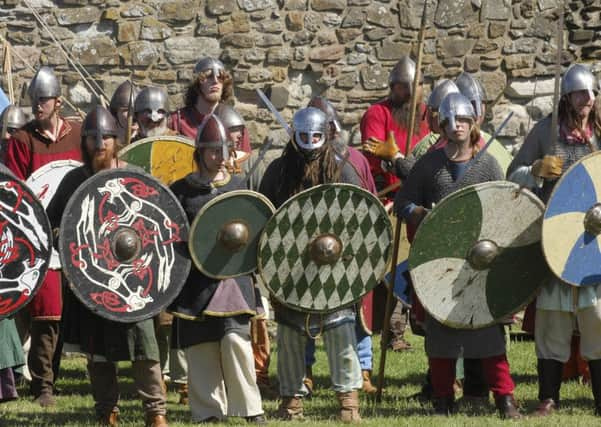Glendale, History Society


Archaeologists have always been absorbed in the analysis of pots and coins, the durable detritus of past societies which gives us clues about the life and times of our forebears.
As Glendale Local History Society heard at the first talk of the new year, we can also learn a lot from bones, and in particular animal bones.
Advertisement
Hide AdAdvertisement
Hide AdWe listened enthralled as our speaker David Constantine showed us just how much can be deduced from the mix of bones to be found in the waste heaps of ancient sites.
Using the example of a Roman site, he explained how bone debris from kitchens showed the range of meats eaten and how meat was cut up in the cooking process. Even the remains of small snacks of meat might find their way into the drains below a toilet.
And in one instance the abandonment of a building rather than its destruction could be deduced from a debris of bones from small mammals, the residue of owl pellets, which meant the building must have retained its roof for quite a while. Sometimes it is possible to get an indication of pastoral farming practices from the age at which animals are killed, or from the bone deformations on draught animals such as oxen.
In some cases, it is possible to work out that animals were killed not to eat but for their fur, as the skinning process leaves a debris of toes, claws and skulls. Bone debris can also give an indication of trading activity, especially where there is a large amount of similar material which does not seem to relate to the needs of a settlement. Some coastal sites have piles of fish debris, which seem to suggest some form of trading, and may give an indication of whether fish were dried before being traded.
Advertisement
Hide AdAdvertisement
Hide AdIn Anglo-Saxon times, cuts of meat such as venison were distributed according to the status of a person. Which cuts are found at a particular site may then give a clue as to the status of the social group living in a homestead or settlement.
And bones are not the only material which survives from human use of animals. David showed us, using some actual examples, the way our ancestors collected and used antler material. Because this is much stronger than bone, such material was very valuable for tool use.
We heard that there was evidence of trade between Pictish eastern Scotland and early Norwegian Viking societies because tools from reindeer antler have been found on Pictish sites, the reindeer being extinct in Scotland for millennia before then. Antlers are especially good for making combs because of their strength.
Analysis of many sites around the Baltic Sea suggest that in Viking times, skilled antler-carvers travelled around from place to place, carving combs and other objects from antlers collected by local communities for this purpose, the combs being much easier to transport than the antlers.
Advertisement
Hide AdAdvertisement
Hide AdIllustrated with a range of artefacts which David had made to test how our ancestors made use of bone material, we were introduced to the wide range of objects which can be made from bone and antler material, a practice continuing from the present until the invention of plastic.
Needles, pins and spindle whorls were made for use in making cloth and clothes. Pens and pins for writing and drawing on parchment and wax were much needed in Anglo-Saxon times as the development of Christian monasteries led to the production of religious books and accounts.
Boxes were also needed for precious objects such as the relics of saints. The famous Franks casket was made from whalebone, and is often said to come from Northumbria. Many objects were decorated with intricate carving, and some objects found may have only had an ornamental purpose.
At the end of the talk, we were all deeply impressed both by the many skills of our ancestors and by the skill of the forensic archaeologist, whose ability to work out so much from ‘bits of bone’, as enthusiastically conveyed by our speaker, was hugely impressive.
Advertisement
Hide AdAdvertisement
Hide AdThe next GLHS talk will be on Wednesday, February 10. It is actually to be a musical evening, when Andrew and Margaret Watchorn will illustrate the development of musical pipes, including the Northumbrian smallpipes.